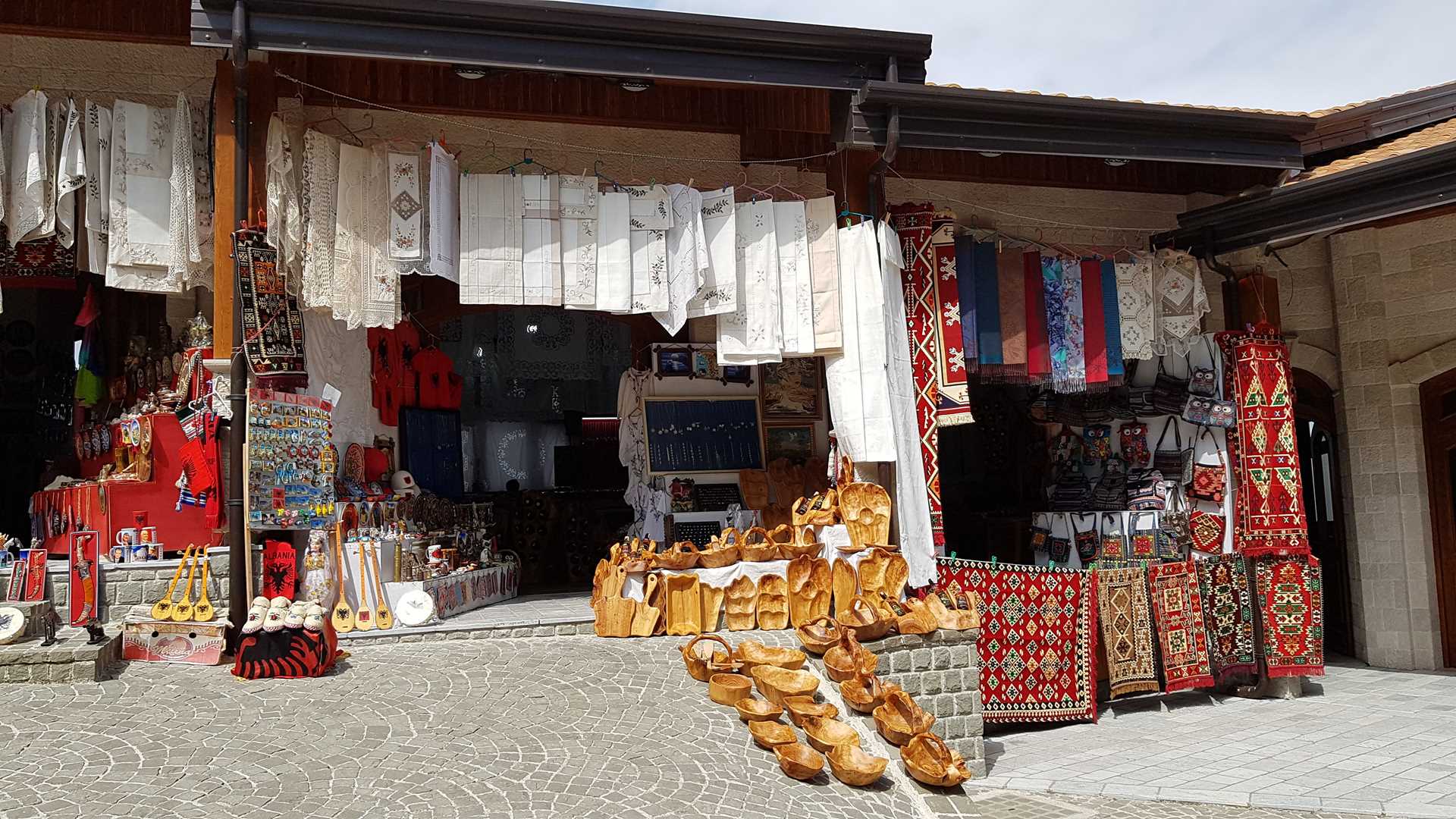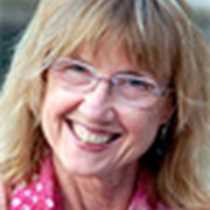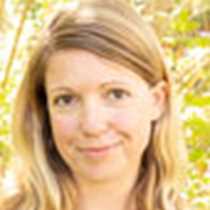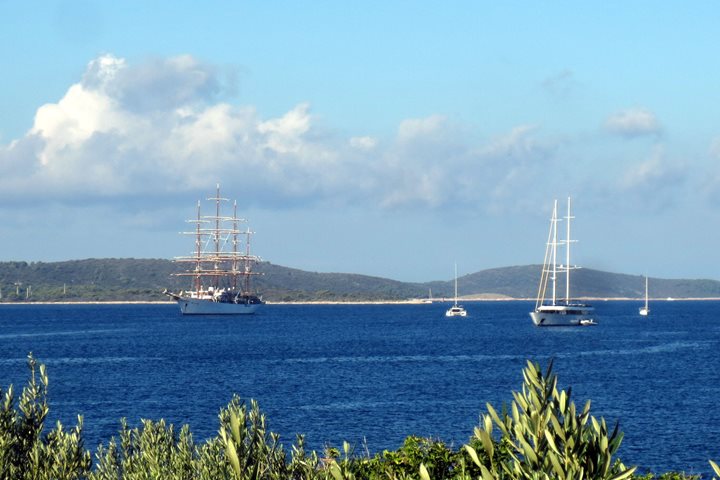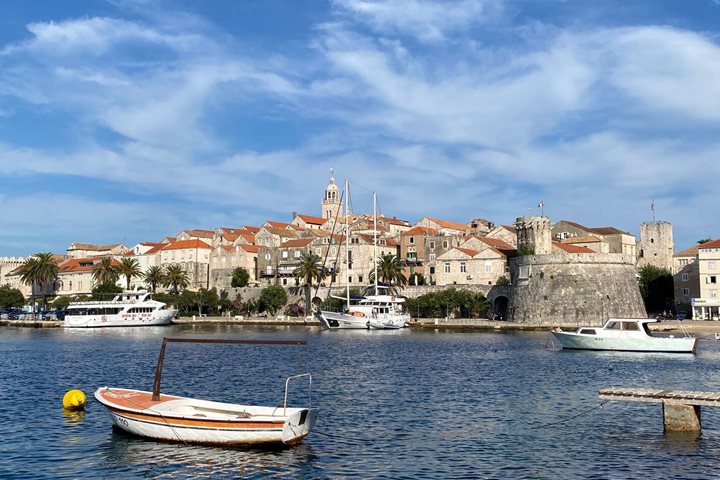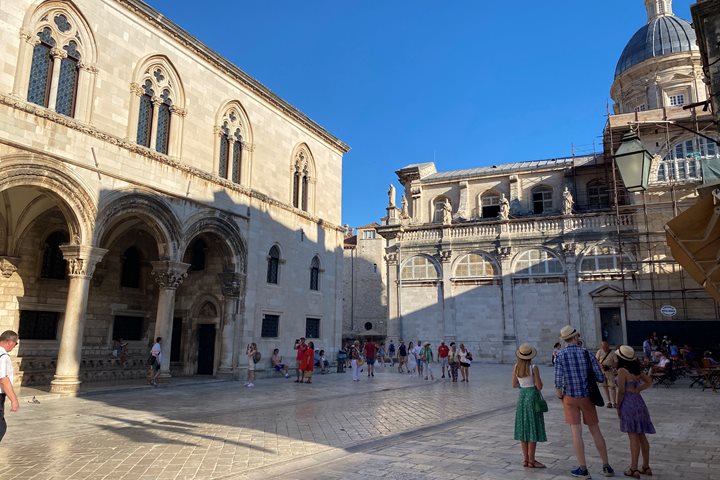We began our visit to Albania in the industrial port of Durres, an important port along the Via Egnatia leading to Constantinople. We headed by bus up into the highlands to Kruje, the old capital and stronghold of the 15th-century national hero George Kastrioti Skanderbeg. As we drove through the countryside, where cows and sheep grazed in pastures alongside new residential and commercial construction, our guides, Ols and Adrian, provided us with an overview of the long and complex history of the Albanians, who claim ancestry from the ancient Illyrians. A former communist country isolated for nearly 50 years, Albania has been steadily working towards building a new democracy and meeting the requirements of joining the European Union.
Once up in the mountain air of Kruje, we made our way through the cobblestone streets of the medieval bazaar to the castle grounds to begin our museum tour. Following a quick visit to a Bektashi Teke (small mosque), we saw the ethnographic museum, housed in the 18th-century compound of a wealthy family. Downstairs there is an orchard and garden, as well as an olive press, tannery, smithy, and distillery, with the Albanian Bektashi sect being fairly secular and not adverse to enjoying some home-brewed raki (brandy). Upstairs the family’s living quarters were arranged in the traditional Balkan Muslim style: separate rooms for men and women, a fully-equipped kitchen, and beautifully-preserved traditional costumes from all over Albania.
The Skanderbeg Museum was built in 1982 (designed by the daughter of communist dictator Enver Hoxha to educate an Albanian audience) and provides the national narrative of George Castrioti, one of history's greatest generals. Taken hostage as a child by the Ottomans and forced to convert to Islam, Castrioti distinguished himself in battle, earning him the title Skanderbeg (after Alexander the Great) for his prowess. Skanderbeg later defected and returned to Kruje to defend Albania from the Ottoman army for 25 years.
Lunch at Bardhi Restaurant was a luxurious spread of Balkan meze (appetizers): grilled vegetables, peppers stuffed with cheese, Albanian byrek (similar to Greek spanakopita, a baked cheese and spinach pie), eggplant rolls with spiced cheese, local olives, and a traditional cornbread with onions. Then we were served a delicious lamb and potato casserole, baked in a traditional clay pot. The Kruje Folkgroup entertained us with traditional music and dances from both the north and south of Albania. A meandering walk through the medieval bazaar yielded a series of antiques, silver filigree jewelry, utensils carved from local olive wood, woolen rugs (kilims), and an intriguing assortment of local and imported souvenirs.
Before returning to the Sea Cloud, we stopped in Durres to explore a 2nd-century-A.D. Roman amphitheater surrounded by walls, reflecting the multiple layers of Greek, Roman, Byzantine, and Venetian influence.
